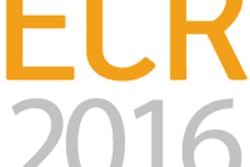It is sleep, wrote William Shakespeare, that "knits up the ravelled sleave of care." But maybe just as important, a new study shows that getting enough sleep prevents coronary artery calcifications, which are strongly associated with morbidity and mortality.
Study participants who slept an hour longer per night than other participants had a significantly lower incidence of coronary artery calcification, according to the report in the December 24-31, 2008, issue of the Journal of the American Medical Association (Vol. 300:24, pp. 2859-2866).
"We have found a robust and novel association between objectively measured sleep duration and five-year incidence of coronary artery calcification," wrote Christopher King and colleagues from the University of Chicago, Northwestern University, and Kaiser Permanente, all in Chicago. "This study further demonstrates the utility of a simple objective measure of sleep that can be used at home."
The participants were all from the Chicago cohort of the larger Coronary Artery Risk Development in Young Adults (CARDIA) trial, an ongoing, prospective study of the evolution of cardiovascular risk factors, initiated in 1985.
CARDIA and many other studies have shown that coronary artery calcification is a strong predictor of heart disease. But while recent studies have found that sleep duration is correlated with several established risk factors for calcification -- including poor glucose regulation, elevated blood pressure, male sex, older age, lower education levels, and higher body mass index -- the association between sleep duration and calcification has not been made unequivocally, due in part to limitations in the reporting methods of previous studies.
Therefore, the authors aimed to assess whether both objective and subjective measures of sleep duration and quality are associated with incidence of calcification over five years, and whether the association is mediated by risk factors for coronary artery calcification.
The healthy middle-aged population of 495 men and women (ages 35-47 at year 15 of the CARDIA study) underwent coronary artery calcium scanning twice: once in 2000-2001 and a second time at a follow-up in 2005-2006.
Potential confounding factors such as age, sex, education, apnea risk, and smoking status, as well as mediators such as lipids, blood pressure, body mass index, diabetes, inflammatory markers, hostility, and depression, were all measured at the start of the study and at the five-year follow-up.
Via a wrist monitor (Actiwatch-16, Philips Respironics, Bend, OR), actigraphy was used to measure sleep duration and fragmentation, daytime sleepiness, overall sleep quality, and reported sleep duration.
"Wrist actigraphy has been validated against polysomnography, demonstrating a correlation of more than 0.9 in healthy individuals for total sleep duration," the authors noted.
The association of these factors to coronary artery calcification was measured by CT calcium scoring (Imatron C-150, GE Healthcare, Chalfont St. Giles, U.K.).
The scans were read in a central lab with readers blinded to participant characteristics. Readers selected a region of interest for each potential calcification, consisting of four or more pixels with a CT value greater than 130 HU, King and his team wrote.
"Agatston scores were adjusted for between-center differences using a standard calcium phantom scanned underneath each participant, and summed across the four major coronary arteries to compute a total calcium score," they wrote.
Longer sleep equals less calcification
The results showed that the incidence of calcification at five years was 12.3% (n = 61 participants; adjusted odds ratio [OR], 0.67 per hour; 95% confidence interval [CI], 0.49-0.91 per hour; p = 0.01).
"After adjusting for age, sex, race, education, smoking, and apnea risk, longer measured sleep duration was associated with reduced calcification incidence (adjusted OR, 0.67 per hour [95% CI, 0.49-0.91 per hour]). Additionally adjusting for key cardiovascular risk factors had little effect on the OR for measured sleep."
There was a moderate correlation between self-reported and actigraphic sleep categories (0.22, p = 0.001), the authors added. "The proportion of persons developing calcification decreases monotonically as actigraphic sleep hours increases," they wrote.
None of the potential mediators significantly changed the magnitude or significance of sleep, though many of them had effects on calcification incidence. The alternate metrics also were not associated with incident calcification.
"Stratifying by sex suggested a stronger measured sleep duration for women (n = 291; OR for sleep, 0.48 [95% CI, 0.27-0.85]) than for men (n = 203; OR for sleep, 0.76 [95% CI, 0.52-1.10]), however, the interaction term in a combined model was not significant (p = 0.12)," the authors wrote. There was a trend toward greater effect in participants at high risk for sleep apnea that did not reach statistical significance (p = 0.51).
"One hour more of sleep decreased the estimated odds of calcification by 33%," and the dose-response relationship "held up across the range of measured sleep; the lack of significant heterogeneity by race or sex strengthened this finding," the team concluded.
Among the study's limitations, too few participants had calcification at baseline that would have permitted assessment of further calcification among them over time, the authors wrote. In addition, the first sleep measures were performed halfway between the baseline and follow-up scans, so the level of calcification was not known precisely at that time.
"Sleep quality is multidimensional, and there is no perfect metric for measuring it; the apnea-hypopnea index from polysomnography is probably the closest to a criterion standard," they added.
Using calcification as an end point also is problematic, they noted, because calcification is not a clinical outcome, and because undetected health problems at the time of the baseline scan could potentially confound the association between sleep and less calcification of the coronary arteries.
"Will objective sleep tie to coronary disease event outcomes over the long term?" King and colleagues asked. "While calcification predicts such outcomes, it is difficult to know how and if the predictors of calcification themselves will determine outcomes, or if their impact will be purely mediated by their effect on calcification."
If the association between sleep and calcification is proved to be valid, interventional studies will be needed to guide clinical advice, they wrote.
By Eric Barnes
AuntMinnie.com staff writer
December 23, 2008
Related Reading
Higher serum phosphorus levels linked to coronary atherosclerosis in young adults, December 3, 2008
Overweight kids have worse cardiac ventricular function, November 13, 2008
Ultrasound shows advanced vascular age of obese children, November 12, 2008
Negative coronary calcium scores in the young can understate plaque burden, November 1, 2008
MI can occur in adolescents without cardiac abnormalities, October 2, 2007
Copyright © 2008 AuntMinnie.com




















